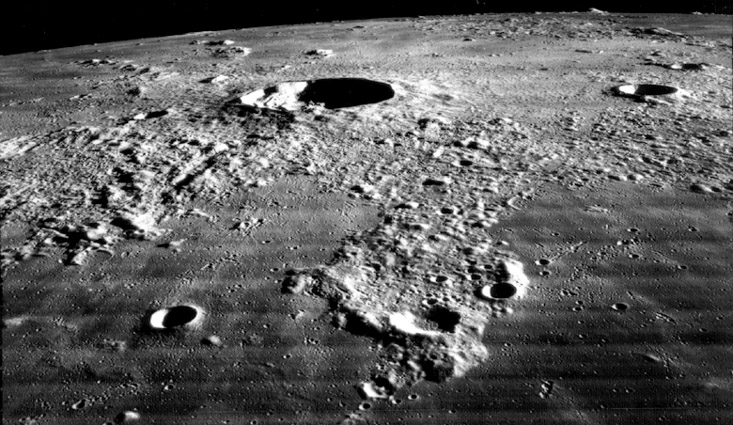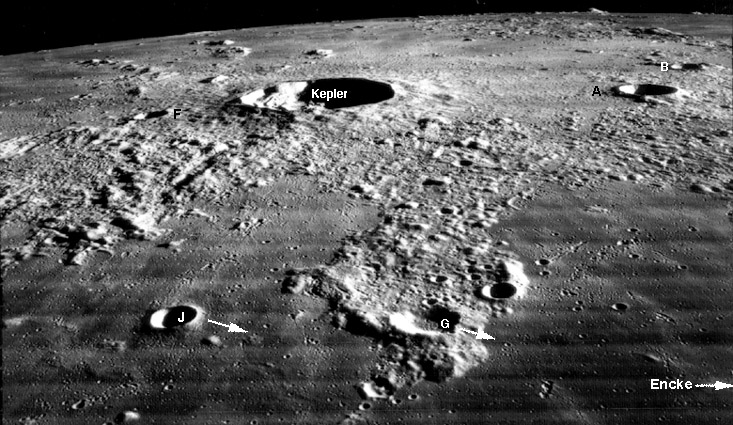May 1, 2015
Kepler
Originally published April 30, 2004
Image Credit: NASA Lunar Orbiter III-M162 |
|
Kepler Kepler don't get no respect. As a bright young crater with a concentrated ray system you would think that Kepler would be a frequent target of observation, but not so. I think the problem is that Kepler (32 km/2.6 km) is just a normal transition crater between small simple craters and larger complex craters. But Kepler's real problem is that its completely overshadowed by nearby Copernicus! Nonetheless, this lovely oblique image carries useful information. First, the rubbly hills that Kepler impacted into are part of the Alpes Formation, the inner ejecta from the Imbrium impact, also well seen near Cassini. Second, the hills have been embayed by later lava flows that filled in low spots. And Kepler's rays and small secondary craters are on top of, and cut into, the lavas (especially in the bottom right). Also note that the exterior rim of Kepler is about half the crater width - well seen on the right side of the crater). So next time you observe Kepler, give it a little respect! Related Links: Yesterday's LPOD: Greek Letters Tomorrow's LPOD: Serenitatis Diameter Sequence |
Author & Editor:
Charles A. Wood
COMMENTS?
Register, Log in, and join in the comments.





